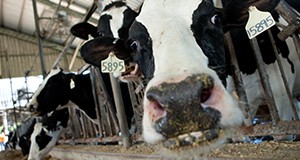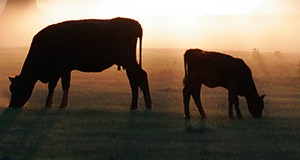 To perform a fetotomy means to dissect (to cut apart) a dead fetus in utero. Fetotomy is applicable particularly to cows because of the size of the uterus and the opportunity to introduce instruments to the full depth of the fetus. Fetotomy is an obstetric procedure that should only be performed by a trained veterinarian or under a trained veterinarian’s supervision. This 4-page fact sheet lists the circumstances when a fetotomy can be performed to save the life of the dam, the tools needed, fetotome preparation, the sequence of cuts for anterior presentation, and final comments. Written by Myriam Jimenez, Carlos Risco, and Klibs N. Galvão, and published by the UF Department of Veterinary Medicine-Large Animal Clinical Sciences, August 2015.
To perform a fetotomy means to dissect (to cut apart) a dead fetus in utero. Fetotomy is applicable particularly to cows because of the size of the uterus and the opportunity to introduce instruments to the full depth of the fetus. Fetotomy is an obstetric procedure that should only be performed by a trained veterinarian or under a trained veterinarian’s supervision. This 4-page fact sheet lists the circumstances when a fetotomy can be performed to save the life of the dam, the tools needed, fetotome preparation, the sequence of cuts for anterior presentation, and final comments. Written by Myriam Jimenez, Carlos Risco, and Klibs N. Galvão, and published by the UF Department of Veterinary Medicine-Large Animal Clinical Sciences, August 2015.
http://edis.ifas.ufl.edu/vm224
Tag: Klibs N. Galvao
Can Calcium Propionate Help Maintain Calcium Concentrations and Prevent Metritis in Dairy Cows with Dystocia?
Studies have suggested that giving dairy cows supplemental calcium may reduce the incidence of metritis. This study tested this hypothesis with cows at the UF Dairy Unit and found that calcium supplements actually did not benefit postpartum health and are not recommended as means of metritis prevention. This 3-page fact sheet was written by Klibs N. Galvao, Mauricio Benzaquen, and Carlos A. Risco, and published by the UF Department of Veterinary Medicine—Large Animal Clinical Sciences, June 2015.
http://edis.ifas.ufl.edu/vm223
Effect of Anovulation and Subclinical Endometritis on Fertility of Lactating Dairy Cows: Why Are Dairy Cows Not Getting Pregnant: Lack of Cyclicity, Uterine Disease, or Both?
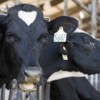 Virtually all Holstein dairy cows have the first wave of follicle growth starting two weeks postpartum, with about 30% of these cows ovulating within 21 days in milk. This 3-page fact sheet presents the results of a recent paper that evaluated the individual and combined effects of anovulation and subclinical endometritis on reproductive performance of dairy cows. Written by Klibs N. Galvão and Achilles Vieira-Neto, and published by the UF Department of Veterinary Medicine-Large Animal Clinical Sciences, May 2014.
Virtually all Holstein dairy cows have the first wave of follicle growth starting two weeks postpartum, with about 30% of these cows ovulating within 21 days in milk. This 3-page fact sheet presents the results of a recent paper that evaluated the individual and combined effects of anovulation and subclinical endometritis on reproductive performance of dairy cows. Written by Klibs N. Galvão and Achilles Vieira-Neto, and published by the UF Department of Veterinary Medicine-Large Animal Clinical Sciences, May 2014.
http://edis.ifas.ufl.edu/vm222
Can Maternal Colostrum Be Replaced by Commercial Products for Feeding Newborn Calves?
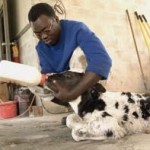 Colostrum management and feeding are critical for calf health, calves’ future productive life, and farm profitability. Current recommendations state that a calf needs to ingest at least 150–200 g of immunoglobulin G within two hours of birth, but when colostrum quality is poor or unavailable, colostrum replacer may be a suitable alternative. This 3-page fact sheet presents the results of a recent publication that evaluated the effects of feeding maternal colostrum, one dose of plasma-derived colostrum replacer, or one dose of colostrum-derived colostrum replacer on serum total protein, immunoglobulin G concentration, calf morbidity, calf mortality, and weight gain from birth to weaning. Written by Klibs N. Galvao, and published by the UF Department of Veterinary Medicine-Large Animal Clinical Sciences, May 2014.
Colostrum management and feeding are critical for calf health, calves’ future productive life, and farm profitability. Current recommendations state that a calf needs to ingest at least 150–200 g of immunoglobulin G within two hours of birth, but when colostrum quality is poor or unavailable, colostrum replacer may be a suitable alternative. This 3-page fact sheet presents the results of a recent publication that evaluated the effects of feeding maternal colostrum, one dose of plasma-derived colostrum replacer, or one dose of colostrum-derived colostrum replacer on serum total protein, immunoglobulin G concentration, calf morbidity, calf mortality, and weight gain from birth to weaning. Written by Klibs N. Galvao, and published by the UF Department of Veterinary Medicine-Large Animal Clinical Sciences, May 2014.
http://edis.ifas.ufl.edu/vm196
What Is the Most Cost-Effective Breeding Program for Lactating Dairy Cows: Timed AI, Estrous Detection, or a Combination of Both?
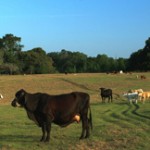 As any other business enterprise, the sustainability of a dairy farm is highly dependent on economics. Reproduction influences both milk production and number of replacement heifers available on a farm; therefore, reproductive efficiency becomes a key determinant of dairy cow profitability. Several parameters affect reproductive performance. This 4-page fact sheet presents information from recently published articles that looked at the economics of different reproductive programs for breeding dairy cows that use estrus detection only, timed AI only, or a combination of both. Written by Klibs N. Galvão, Gustavo M. Schuenemann, Eduardo S. Ribeiro, and Jose Eduardo P. Santos, and published by the UF Department of Veterinary Medicine-Large Animal Clinical Sciences, May 2014.
As any other business enterprise, the sustainability of a dairy farm is highly dependent on economics. Reproduction influences both milk production and number of replacement heifers available on a farm; therefore, reproductive efficiency becomes a key determinant of dairy cow profitability. Several parameters affect reproductive performance. This 4-page fact sheet presents information from recently published articles that looked at the economics of different reproductive programs for breeding dairy cows that use estrus detection only, timed AI only, or a combination of both. Written by Klibs N. Galvão, Gustavo M. Schuenemann, Eduardo S. Ribeiro, and Jose Eduardo P. Santos, and published by the UF Department of Veterinary Medicine-Large Animal Clinical Sciences, May 2014.
http://edis.ifas.ufl.edu/vm198
What Is the Most Cost-Effective Breeding Program for Breeding Heifers: Timed AI, Estrous Detection, or a Combination of Both?
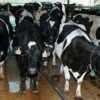 As any other business enterprise, the sustainability of a dairy farm is highly dependent on economics. In order to obtain a profitable return on assets, there is a constant need to maximize outputs and, oftentimes, to minimize inputs. Reproduction influences both milk production and number of replacement heifers available on a farm; therefore, reproductive efficiency becomes a key determinant of dairy cow profitability. This 3-page fact sheet presents information from recently published work that looked at the economics of different reproductive programs for breeding heifers that use timed AI only, estrus detection only, or a combination of both. Written by Klibs N. Galvão, Eduardo S. Ribeiro, and Jose Eduardo P. Santos, and published by the UF Department of Veterinary Medicine-Large Animal Clinical Sciences, May 2014.
As any other business enterprise, the sustainability of a dairy farm is highly dependent on economics. In order to obtain a profitable return on assets, there is a constant need to maximize outputs and, oftentimes, to minimize inputs. Reproduction influences both milk production and number of replacement heifers available on a farm; therefore, reproductive efficiency becomes a key determinant of dairy cow profitability. This 3-page fact sheet presents information from recently published work that looked at the economics of different reproductive programs for breeding heifers that use timed AI only, estrus detection only, or a combination of both. Written by Klibs N. Galvão, Eduardo S. Ribeiro, and Jose Eduardo P. Santos, and published by the UF Department of Veterinary Medicine-Large Animal Clinical Sciences, May 2014.
http://edis.ifas.ufl.edu/vm199
Can GnRH Be Used to Induce Ovulation Early in Lactation and Improve Fertility in Dairy Cows?
 It is well established that early cyclicity results in increased pregnancy per artificial insemination and decreased time to pregnancy. But none of the previous studies has used synchronization programs such as the Presynch-Ovsynch as part of their reproductive management. This 2-page fact sheet presents the results of a recent paper that evaluated the effects of administration of GnRH at 17 ± 3 and 20 ± 3 DIM in Holstein dairy cows without a corpus luteum (CL) on induction of ovulation, uterine health, and reproductive outcomes. Written by Klibs N. Galvão, and published by the UF Department of Veterinary Medicine-Large Animal Clinical Sciences, July 2014.
It is well established that early cyclicity results in increased pregnancy per artificial insemination and decreased time to pregnancy. But none of the previous studies has used synchronization programs such as the Presynch-Ovsynch as part of their reproductive management. This 2-page fact sheet presents the results of a recent paper that evaluated the effects of administration of GnRH at 17 ± 3 and 20 ± 3 DIM in Holstein dairy cows without a corpus luteum (CL) on induction of ovulation, uterine health, and reproductive outcomes. Written by Klibs N. Galvão, and published by the UF Department of Veterinary Medicine-Large Animal Clinical Sciences, July 2014.
http://edis.ifas.ufl.edu/vm201
When Should We Stop Breeding Dairy Cows?
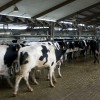 The decision of when to start and when to stop breeding cows during a lactation is often a challenging one for dairy producers. This 3-page fact sheet presents practical rules on how to determine when to stop breeding Holstein dairy cows based on persistency of milk production and break-even point for milk production. Written by Klibs N. Galvão and Albert De Vries, and published by the UF Department of Veterinary Medicine-Large Animal Clinical Sciences, July 2014.
The decision of when to start and when to stop breeding cows during a lactation is often a challenging one for dairy producers. This 3-page fact sheet presents practical rules on how to determine when to stop breeding Holstein dairy cows based on persistency of milk production and break-even point for milk production. Written by Klibs N. Galvão and Albert De Vries, and published by the UF Department of Veterinary Medicine-Large Animal Clinical Sciences, July 2014.
http://edis.ifas.ufl.edu/vm202
Should You Breed Cows during the Summer in the Southeastern United States? An Economic Analysis of a Dairy Herd in Florida
 In the southeast United States, since dairy cows experience decreased reproductive performance during the hot and humid summers, some dairy farmers delay breeding until the cooler fall. But there is no economic data to support this practice. This 3-page fact sheet presents the results of a recent paper that evaluated the effects that delaying breeding during the summer has on cow performance and profitability in Florida. Written by Klibs N. Galvão and Albert De Vries, and published by the UF Department of Veterinary Medicine-Large Animal Clinical Sciences, July 2014.
In the southeast United States, since dairy cows experience decreased reproductive performance during the hot and humid summers, some dairy farmers delay breeding until the cooler fall. But there is no economic data to support this practice. This 3-page fact sheet presents the results of a recent paper that evaluated the effects that delaying breeding during the summer has on cow performance and profitability in Florida. Written by Klibs N. Galvão and Albert De Vries, and published by the UF Department of Veterinary Medicine-Large Animal Clinical Sciences, July 2014.
http://edis.ifas.ufl.edu/vm195
Is It Worth Switching from Natural Service to Artificial Insemination? A Comparison of Reproductive Performance and Profitability in Dairy Herds
 Reproductive efficiency is a key determinant of dairy cow profitability. A considerable portion of dairy producers in the United States still use NS in at least part of their breeding program. This 3-page fact sheet presents the results of papers that compared the reproductive performance and profitability of dairy cows submitted to natural service or a combination of timed AI and natural service. Written by Klibs N. Galvão, Eduardo S. Ribeiro, and Jose Eduardo P. Santos, and published by the UF Department of Veterinary Medicine-Large Animal Clinical Sciences, June 2014.
Reproductive efficiency is a key determinant of dairy cow profitability. A considerable portion of dairy producers in the United States still use NS in at least part of their breeding program. This 3-page fact sheet presents the results of papers that compared the reproductive performance and profitability of dairy cows submitted to natural service or a combination of timed AI and natural service. Written by Klibs N. Galvão, Eduardo S. Ribeiro, and Jose Eduardo P. Santos, and published by the UF Department of Veterinary Medicine-Large Animal Clinical Sciences, June 2014.
http://edis.ifas.ufl.edu/vm200
Should Genetics Be Blamed for High Incidence of Uterine Disease in Dairy Cows?
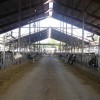 Uterine diseases are highly prevalent in high-producing dairy cows. They have been associated with decreased pregnancy per artificial insemination (AI), extended interval to pregnancy, increased culling, and economic losses. This 3-page fact sheet presents the results of a recent paper that examined how alterations on the TLR genes, which control innate immune response, affect the susceptibility to uterine diseases. Written by Klibs N. Galvão, Christopher M. Seabury, and Pablo Pinedo, and published by the UF Department of Veterinary Medicine-Large Animal Clinical Sciences, May 2014.
Uterine diseases are highly prevalent in high-producing dairy cows. They have been associated with decreased pregnancy per artificial insemination (AI), extended interval to pregnancy, increased culling, and economic losses. This 3-page fact sheet presents the results of a recent paper that examined how alterations on the TLR genes, which control innate immune response, affect the susceptibility to uterine diseases. Written by Klibs N. Galvão, Christopher M. Seabury, and Pablo Pinedo, and published by the UF Department of Veterinary Medicine-Large Animal Clinical Sciences, May 2014.
http://edis.ifas.ufl.edu/vm197
Comparing Waterbeds and Sand Beds for Cows: A Study at the UF/IFAS Dairy Unit (VM194)
 One important aspect of a cow’s comfort is the type of bedding used. Waterbeds for cows have recently gained popularity because of advertisements, news reports in outlets such as CNN. The UF/IFAS Dairy Unit (DU) provides a good opportunity to compare sand beds and waterbeds at optimal conditions. The dairy has waterbeds installed in one half of the barns and sand beds in the other half. This publication provides a field comparison of waterbeds and sand beds in one herd. We observed that when stalls are maintained at optimal conditions, cows in sand-bedded stalls had decreased incidence of hock lesions and increased stall usage compared to cows in waterbeds. This 5-page fact sheet was written by Klibs N. Galvão and Ori Eizenberg, and published by the UF Department of Veterinary Medicine-Large Animal Clinical Sciences, May 2013.
One important aspect of a cow’s comfort is the type of bedding used. Waterbeds for cows have recently gained popularity because of advertisements, news reports in outlets such as CNN. The UF/IFAS Dairy Unit (DU) provides a good opportunity to compare sand beds and waterbeds at optimal conditions. The dairy has waterbeds installed in one half of the barns and sand beds in the other half. This publication provides a field comparison of waterbeds and sand beds in one herd. We observed that when stalls are maintained at optimal conditions, cows in sand-bedded stalls had decreased incidence of hock lesions and increased stall usage compared to cows in waterbeds. This 5-page fact sheet was written by Klibs N. Galvão and Ori Eizenberg, and published by the UF Department of Veterinary Medicine-Large Animal Clinical Sciences, May 2013.
http://edis.ifas.ufl.edu/vm194
Comparing the Urine Ketone Strip Test and Handheld Ketone Meter to Diagnose Ketosis in Early Lactation Dairy Cows (VM186)
 Ketosis is a common metabolic disease in fresh dairy cows. Clinical and subclinical ketosis (SCK) can cause reduced milk yield, decreased milk protein, reduced reproductive capacity, and increased risk of displaced abomasum. Usually, diagnosing ketosis is performed by measuring acetoacetate or BHBA levels in the blood, urine, or milk samples. Measuring BHBA in serum or plasma is considered the gold standard diagnostic test for subclinical ketosis, because this method has stability, but the price for ketone strips is approximately $0.08/strip while the price for the the electronic BHBA measuring system is approximately $1.00. UF/IFAS researchers conducted a study to compare the two, using 72 Holstein cows between 14–40 days in milk from three dairy farms in north-central Florida with 450–800 lactating dairy cows. The key finding for this experiment is that no difference exists in BHBA concentration between cows that had a trace or small in the ketone strip reading. This 3-page fact sheet was written by Klibs N. Galvão, Achilles Vieira Neto, Gustavo Peña, Joao Bittar, and Lucas Ibarbia, and published by the UF Department of Veterinary Medicine-Large Animal Clinical Sciences, October 2012.
Ketosis is a common metabolic disease in fresh dairy cows. Clinical and subclinical ketosis (SCK) can cause reduced milk yield, decreased milk protein, reduced reproductive capacity, and increased risk of displaced abomasum. Usually, diagnosing ketosis is performed by measuring acetoacetate or BHBA levels in the blood, urine, or milk samples. Measuring BHBA in serum or plasma is considered the gold standard diagnostic test for subclinical ketosis, because this method has stability, but the price for ketone strips is approximately $0.08/strip while the price for the the electronic BHBA measuring system is approximately $1.00. UF/IFAS researchers conducted a study to compare the two, using 72 Holstein cows between 14–40 days in milk from three dairy farms in north-central Florida with 450–800 lactating dairy cows. The key finding for this experiment is that no difference exists in BHBA concentration between cows that had a trace or small in the ketone strip reading. This 3-page fact sheet was written by Klibs N. Galvão, Achilles Vieira Neto, Gustavo Peña, Joao Bittar, and Lucas Ibarbia, and published by the UF Department of Veterinary Medicine-Large Animal Clinical Sciences, October 2012.
http://edis.ifas.ufl.edu/vm186
Use of Ultrasonography to Age Pregnancy in Early Gestation in Dairy Cows (VM184)
 Using ultrasonography for diagnosis and aging of pregnancy is becoming more widespread among bovine practitioners because it can be done earlier than by traditional methods, and because it can be used to monitor fetal development and determine fetal age and sex. This 3-page fact sheet presents a detailed measurement of the amniotic vesicle from 27 to 34 days after breeding so a more precise aging of early pregnancies can be performed. Written by Klibs N.A. Galvão, and published by the UF Department of Veterinary Medicine-Large Animal Clinical Sciences, May 2012.
Using ultrasonography for diagnosis and aging of pregnancy is becoming more widespread among bovine practitioners because it can be done earlier than by traditional methods, and because it can be used to monitor fetal development and determine fetal age and sex. This 3-page fact sheet presents a detailed measurement of the amniotic vesicle from 27 to 34 days after breeding so a more precise aging of early pregnancies can be performed. Written by Klibs N.A. Galvão, and published by the UF Department of Veterinary Medicine-Large Animal Clinical Sciences, May 2012.
http://edis.ifas.ufl.edu/vm184
Risk Factors for Uterine Disease in Dairy Cows (VM183)
 Uterine diseases are highly prevalent in high-producing dairy cows. Predictors of uterine disease include traditional risk factors, BHBA blood concentration, NEFA blood concentration, neutrophil glycogen stores and calcium. This 4-page fact sheet was written by Klibs N.A. Galvão, and published by the UF Department of Veterinary Medicine-Large Animal Clinical Sciences, May 2012.
Uterine diseases are highly prevalent in high-producing dairy cows. Predictors of uterine disease include traditional risk factors, BHBA blood concentration, NEFA blood concentration, neutrophil glycogen stores and calcium. This 4-page fact sheet was written by Klibs N.A. Galvão, and published by the UF Department of Veterinary Medicine-Large Animal Clinical Sciences, May 2012.
http://edis.ifas.ufl.edu/vm183
Uterine Microbiology of Healthy Cows and Cows That Develop Uterine Disease (VM182/)
 The dairy cow is unique because virtually all cows are infected with bacteria right after calving. A recent study that used metagenomic analysis to characterize the uterine flora in healthy and metritic cows observed that most clone sequences from the metritic cows were from the phylum Fusobacteria. This 4-page fact sheet summarizes what is known about the pathogenic bacteria associated with metritis and endometritis. Written by Klibs N. Galvão and published by the UF Department of Veterinary Medicine-Large Animal Clinical Sciences, January 2012.
The dairy cow is unique because virtually all cows are infected with bacteria right after calving. A recent study that used metagenomic analysis to characterize the uterine flora in healthy and metritic cows observed that most clone sequences from the metritic cows were from the phylum Fusobacteria. This 4-page fact sheet summarizes what is known about the pathogenic bacteria associated with metritis and endometritis. Written by Klibs N. Galvão and published by the UF Department of Veterinary Medicine-Large Animal Clinical Sciences, January 2012.
http://edis.ifas.ufl.edu/vm182
Association between Immune Function and Development of Uterine Disease in Dairy Cows (VM181)
 A sharp decrease in glucose and sodium during the transition to lactation makes dairy cows more susceptible to uterine disease. This 4-page fact sheet was written by Klibs N. Galvão, and published by the UF Department of Veterinary Medicine-Large Animal Clinical Sciences, January 2012.
A sharp decrease in glucose and sodium during the transition to lactation makes dairy cows more susceptible to uterine disease. This 4-page fact sheet was written by Klibs N. Galvão, and published by the UF Department of Veterinary Medicine-Large Animal Clinical Sciences, January 2012.
http://edis.ifas.ufl.edu/vm181
Identifying and Treating Uterine Disease in Dairy Cows (VM179)
Uterine diseases are prevalent in high producing dairy cows and require prompt diagnosis and treatment. This 6-page fact sheet describes identification and treatment for four classes of uterine diseases in dairy cows. Written by Klibs N. Galvão, Carlos Risco, and Jose E.P. Santos, and published by the UF Department of Veterinary Medicine, May 2011.
http://edis.ifas.ufl.edu/vm179
